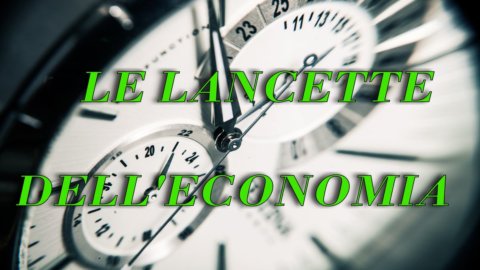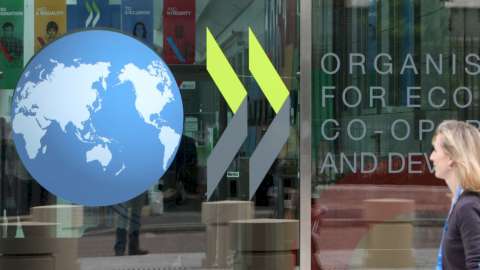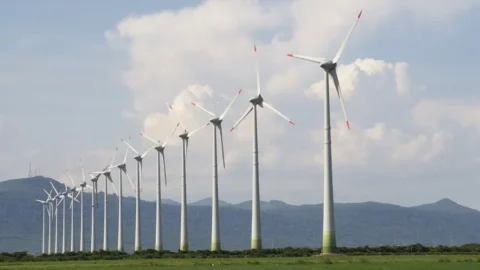REAL INDICATORS – When the going gets tough the tough gets going. When the game is hard, the tough begin to play. Think 2020 was a year nigro signanda lapillus, to mark among the most ominous of your memory? And that 2021 was better, but still bad? Well, you don't know what awaits you in 2022 and in the coming years.
In 2022 we will stay orphans of more expansive policies that, during its thousand-year history, humanity has ever fielded in times of peace. A kind of multiplication of the loaves and fishes who performed the miracle of avoiding pandemic depression. Monetary expansion is now rightly being withdrawn, with the appropriate gradualism, to prevent the purchasing power generated from blowing too much on the embers of inflation. And even more appropriately continues the largesse fiscal policies, which alleviate the pressure on central banks to act for and on behalf of governments.
And in 2022 we will face it in earnest the real challenges of this New Millennium: the energy transition, the digital one, demographic decline, the multipolar world. Of these challenges you can already see the impacts in recent months, with the increase in energy prices and the difficulties of many productive sectors in adapting to digitization, difficulties exacerbated by a non-temporary shortage of chips, and in the lack of workers.
È the century of Africa, which will more than quadruple the population; Lagos, Nigeria, will become the busiest metropolis on the planet, with nearly 90 million (NINETY MILLION) inhabitants. With inevitable strong South-North migratory flows.
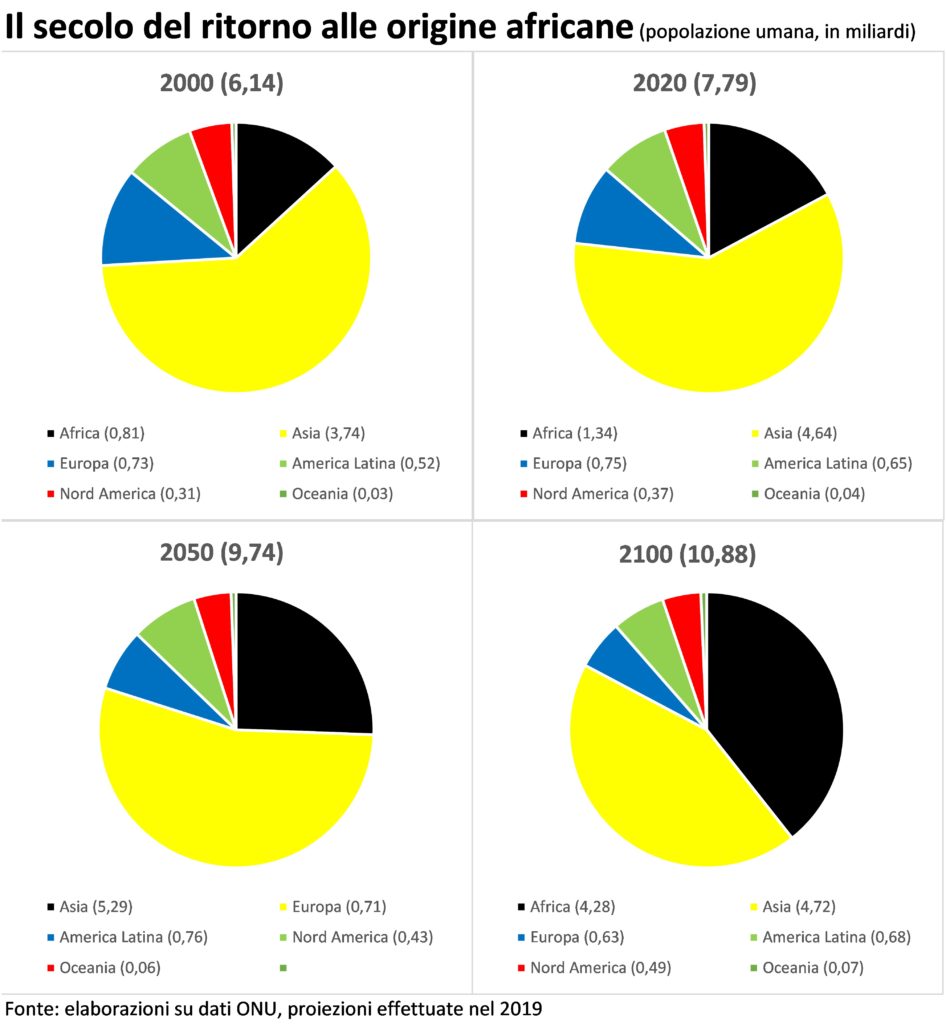
For governments and for entrepreneurs, for consumers, and for workers, for citizens, everyone is make or break it, a trial without appeal. Will we be able to manage these changes? Or will we suffer natural disasters? Will we be able to peacefully divide up increasingly scarce natural resources?
At the start of a new annual cycle it is customary to ask what it will bring us. And it is inevitable to answer, as good Soothsayer Brothers and with the help of the genius of Gianni Rodari, who: "I can't find more written for now in the destiny of the new year: for the rest, this year too will be as men will do!". As humble chroniclers of economic events we can also observe something else.
First of all, the economy presents itself at the start of 2022 in dazzling form. Consumers consume, investors invest and savers save. On all five continents. There China, the first non-immobile mover of the global convoy, accelerated in December, both in the service sector and in manufacturing; and this should alleviate shortages from disruption of global value chains. The same can be said of many other satellite economies to China: Indonesia, Japan, Australia, Thailand, Vietnam and Malaysia.
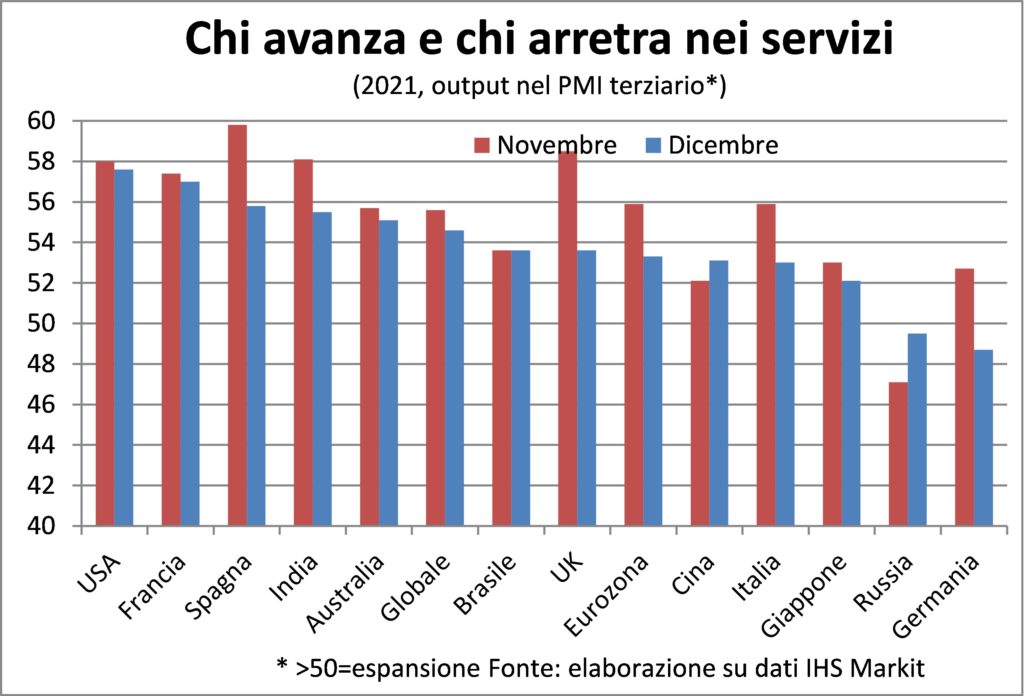
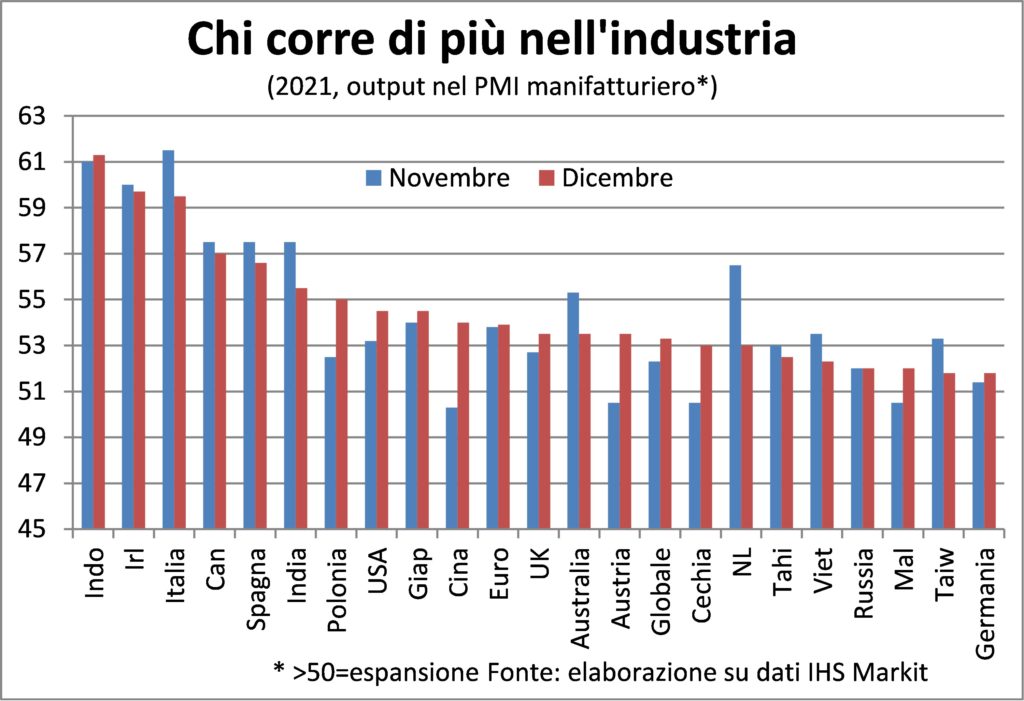
- USA continue to grind increases in production volumes in manufacturing and in the tertiary sector without appearing to be affected by the surge in infections. In reality, this certainly affects the availability of some goods (disruptions along the supply chains), with an inevitable lower supply which prevents demand from expressing the full potential increase, and above all in the labor market, where infected people (currently 16,6 millions, in relation to the population equal to double that of Italy) are forced to isolate themselves; and many of those who are not infected are hesitant to look for a job, for fear of falling ill (there were 1,1 million people in December). Moreover, the pandemic has reduced all or part of the work for 3,1 million people, while 17,2 million worked from home (again due to the virus). Be that as it may, the unemployment rate is at a pandemic low (3,9%, versus 3,5% in February 2020) and the last four-week average of new jobless claims is the lowest since 1969 (52 years ago). !).
The pandemic contributes a lot to explaining the "disappointing" increase in the number of employed people in December (+199, less than half of the expected +450), but with a revision of +141 employed in the previous two months. So, without the virus, the growth of the economy would be even stronger than the already robust and solid pace, revealed by the recent performance of durable goods orders and retail sales. The latter, despite the increase in consumer prices (+6,8% annually), during the Christmas period (from 1 November to 24 December) recorded a +8,5% over a year earlier, also driven by a + 11% of online sales.
Where the signs of growth are less robust is in the Old World, perhaps also because it is old people to trudge… The fact is that the PMI production indices decreased, with the rise of infections and the crackdown on restrictions. January, looking at the infected and the measures introduced (Italy) or varands (up to breaking the balls to no-vax in France) can only see a weakening of social and economic activities. It is distinguished by liveliness, theItalian economy, which is forging the stages of closing the hole in economic activity caused by the pandemic: this will already happen in the current quarter, synchronously with Germany, slightly behind France but a year before Spain. Undoubtedly thanks to the government's hyper-expansive policy which has given free rein to Italian companies to express their ability to serve foreign (increase in quotas) and domestic markets.
with the spring we could move on, and archiving among dark memories the ambulance sirens, the images of the intubated and the long lines to do the shopping or the tampon. Josh Billings, a XNUMXth-century American humorist, gave sage advice: «Never prophesy: because, if the prophecy is wrong, no one will forgive you; and if it's right, no one will remember it.' Regardless of these sensible words, we venture a prophecy: this year of grace of 2022 will be the last of the pandemic, which will become a creeping endemic disease, a bit like the flu or chicken pox. And the economic recovery will continue without serious nicks. What is this prediction based on?
Essentially, on the fact that, in this last antibody challenge between Sars-CoV-19 and modern medicine, the latter will win. Vaccine antibodiesa assists from the antibodies of the post-Omicron healed, they will limit the pandemic and the virus, with the majority of the population now immune, will no longer find room to spread.
The virus continues, as viruses do, to evolve, and the latest variant couples the list of mild outcomes to the thorns of high transmissibility. The problem is that, the more viruses there are around, the greater the probability that new variants will emerge: the fact that in most emerging countries vaccination rates are much lower than in advanced countries, this means that the virus it has the humus necessary to 'experiment' with new versions, and the danger, therefore, is that a variant emerges which, instead of roses and thorns, is all thorns: more transmissible and more lethal. It must be repeated: help poor countries get vaccinated – not just providing the vaccines, but also helping with logistics and distribution – it's not an act of charity, it's an indispensable measure to protect us and them.
That said, it has now been forty days since WHO declared Omicron a 'Variant of Concern': How did the economy react? In these forty days the spread of the virus broke all records. In almost all countries the surge in infections is much higher than that recorded in the darkest months of 2020, when the Covid tsunami hit the five continents (there are now six, given that an outbreak has also occurred on a base Belgian of Antarctica…). Well, just as the medical consequences of Omicron are slight (which is by now the dominant variant almost everywhere), the consequences on economic activity have also been slight.
INFLATION - The moment of truth has arrived. From now on, the dynamics of prices will start to decline. We have repeatedly written that rising prices do not cause inflation. Even when it is close to 7% per year, as in the USA in November.
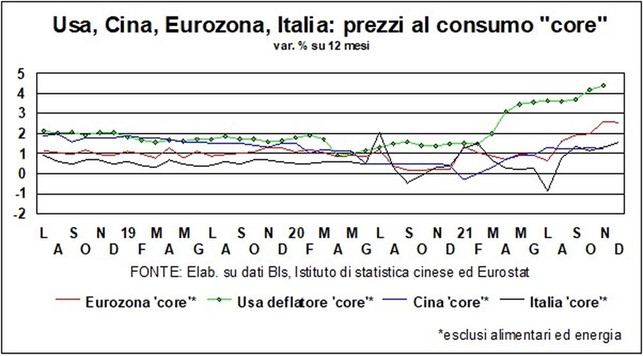
For this to happen, this increase must generate new increases, in the price lists themselves in view of future price increases and in wages to recover the lost purchasing power. The latter is especially important. Both because labor is the main cost factor of any economic activity (companies that only look at direct costs make a serious mistake: they do not consider the labor incorporated in the purchased semi-finished products). And because it generates the push for new price increases, in a sort of dog chasing its own tail. And what is happening to wages?
In USA they are really accelerating! In December, the annual increase reached 4,7%, the highest since February 2002. Helpeeee…
Calm and chalk! If we look at the total salary, which takes into account the hours worked, the dynamic is reduced by more than half a percentage point, and is at pre-Great Recession levels of 2008-09. Secondly, these increases must be seen in relation to the dynamics of productivity; i.e. what matters is the ULC. Which is not registering a red alert pattern.
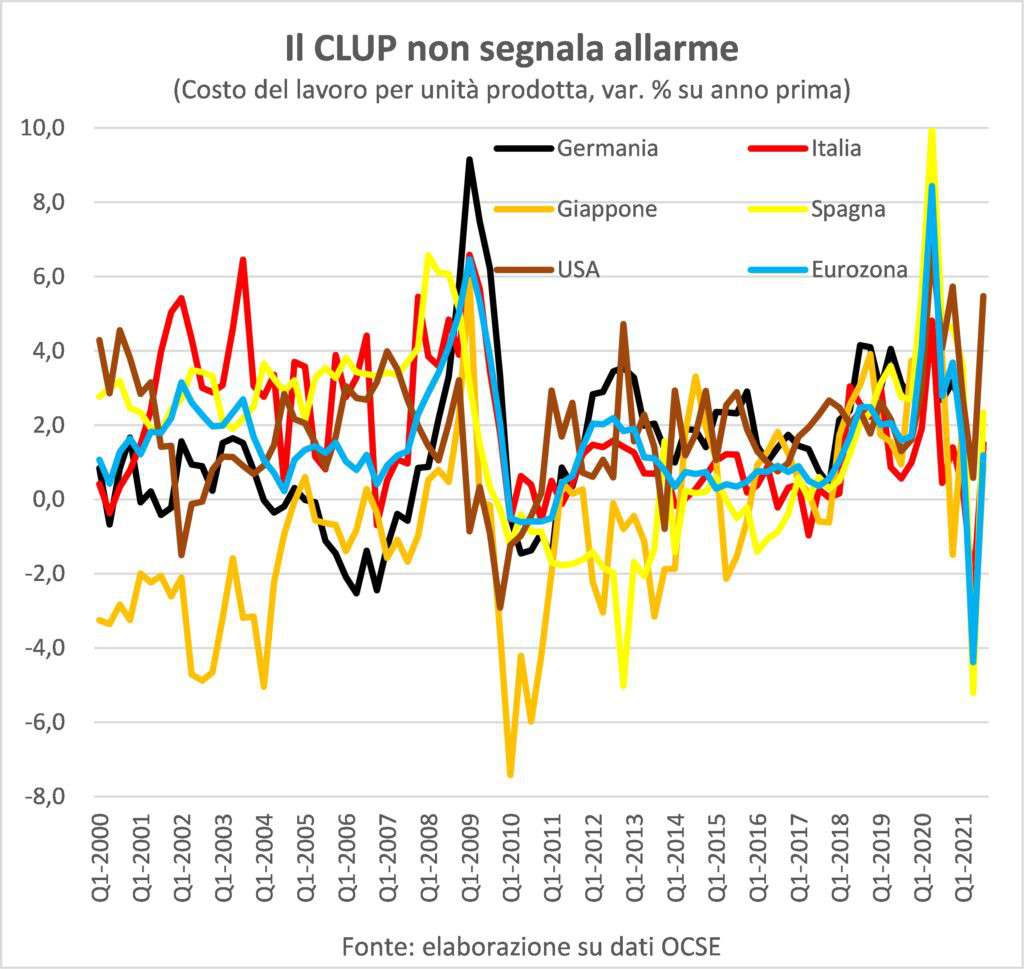
Furthermore, the annual comparison leads already from the current month to weaken the impact of the increase in raw material prices on the dynamics (not on the level) of prices.
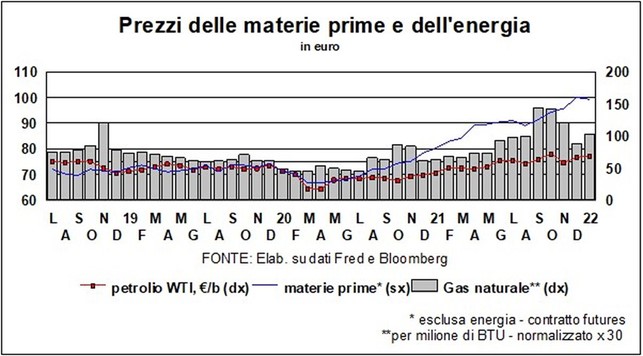
Finally, the underlying forces exercise a fair amount of downward pressure on price lists. Competition is heightened by the digital revolution. And the erosion of purchasing power due to the upward trend in prices over the last year is leading many producers to offer discounts as a form of marketing. From the series: the inflationary mentality doesn't live here.
RATES AND CURRENCIES - I rates of interest – in the segment long-term – are going up. “It's about time!”, they will say savers. Waist at 10, which since the spring of two years ago had been in anomalous negative territory (and savers weren't happy) is approaching zero. T Bond it resumed, at 1,76%, the levels of last March, but the yield is still there below pre-pandemic rates. btp, also below pre-Covid levels, gained 35 basis points compared to November, roughly as Bunds and T-Bonds. The BTp/Bund spread, at 136 points, is slightly higher than in November.
There are three possible explanations for this rate hike. There before purchasing, starts from the assumption that rates a long – let's say ten years old – they are not that the average of short-term rates ten years from now. And, as many expect short rates to rise from the anomalous zero or so prevailing today, long yields rise. There second explanation is the one that would be advanced by vigilantes of the bond markets: inflation rises, and rates must also rise to maintain real yields. There third lies in the progress ofreal economy: if this holds, there will be more demand for funds and this will lead to pressure on rates. The first and third explanations are more convincing than the second, at least for those who, like us, think that the inflationary pressures they will go to fade away (see above).
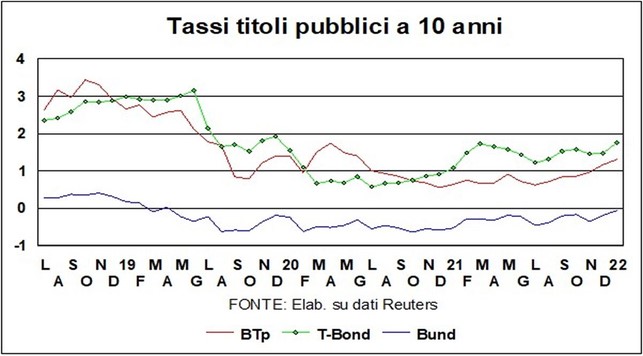
But be careful: what we are witnessing is a process of return to normal. Just as the real economy is on the way to recovering pre-pandemic levels, so too are rates. What is important for economic activity is that i real rates, despite the increase in nominal levels, they continue to hold negative territory, which certainly helps the recovery.
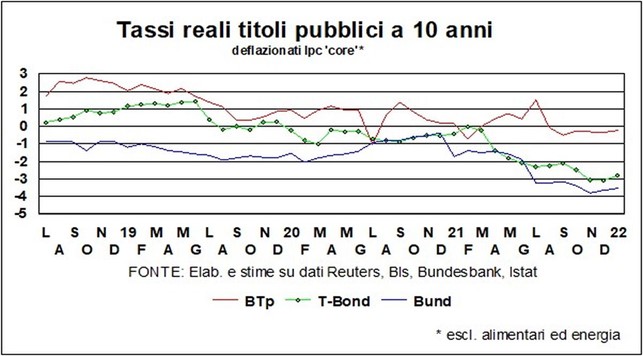
If, indulging in a counterfactual exercise, we were to deflate today's nominal rates with also 'normal' (pre-pandemic) inflation, real rates would still be negative for Germany, around zero for the US and slightly above zero for Italy: again, no problem for the continuation of the shooting.
Of course, there are the Cassandra who fear, for Italy, the near future of the ECB, the closing of the umbrella of QE, and the reaction of the markets that notice – but didn't already know it before? – that Italy has a high public debt. But don't worry: real rates will remain below the growth rate economy and debt will continue to be sustainable.
On the foreign exchange side, calm reigns. The dollar/euro it has been maintained since November around 1.13. The growth differential and the real long-term rate differential have not changed significantly. But the next move is more likely to be in the sense of a further strengthening of the greenback, as the 2022 key rate calendars signal an upward move in the Fed more solicitous than that of the ECBthat yuan has still nibbled something in the sense of appreciation, but the feeling is that the march of the Chinese currency has come to an end, and there is no space for further re-evaluations. Beyond the Alps, the Swiss franc, always smelling of appreciation, hides a basic stability: in the last quarter of a century, it is true, the nominal effective exchange rate has appreciated by more than 80%, but if we look at the real effective exchange rate, the revaluation is almost imperceptible (5%), thanks the lowest Swiss inflation (and, since the beginning of the year, the real exchange rate has even depreciated by a couple of points).
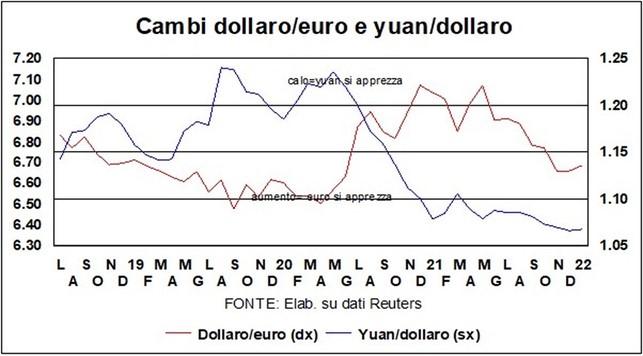
in stock markets some nervousness has set in, after the recent further records. Is the famous correction about to arrive, thanks to the spread of Omicron? It is too early to tell, given the habit of stock exchanges always see the glass half full. But there is no doubt that, the more time passes, the more the chances of one increase correction. Regarding which, however, we can only repeat what was already said last month: corrections aside, «in the less short term, equity investment continues to be at the top of the list of savings allocation: a well-tempered portfolio has the largest share in stocksand rightly so."

